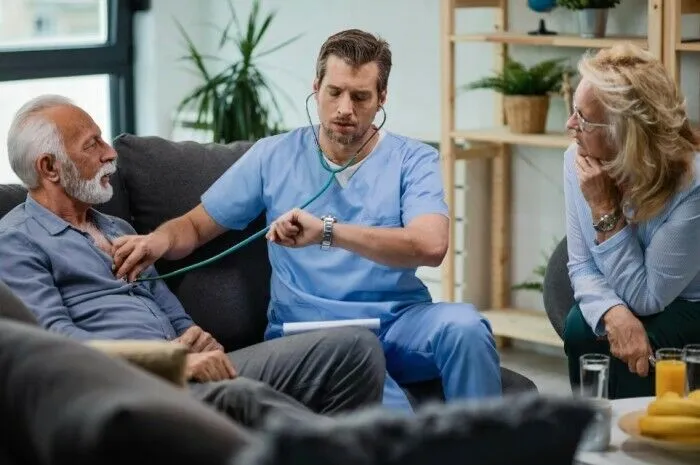Unexpected medical situations happen all the time, so it’s important for every family to know basic first aid. In serious emergencies, you should always get skilled medical help, but knowing how to act quickly can make a big difference in how things turn out. Here is a complete guide with basic first aid skills on how to handle common medical situations at home.
1. Cuts And Minor Wounds
Minor cuts and wounds are common, especially in households with children or during cooking and DIY activities. Follow these steps to manage them effectively:
Clean The Wound: Rinse the cut under cool running water to remove dirt and debris.
Put Pressure on It: To stop the bleeding, put gentle pressure on it with a clean cloth or sterile bandage.
Apply an antiseptic: Once the blood stops, cover the wound with a cream or solution that kills germs.
Protect and Clean the Wound: Put a clean cloth or dressing over the wound to keep it clean and safe.
Attend a first aid course Townsville to learn proper wound care techniques, including when to seek medical attention.
2. Burns
Burns from hot surfaces, liquids, or flames can range from mild to severe. Immediate action can minimize damage:
Cool Down: To cool the burn put it under running cool water for at least 10 minutes. This will take away the pain and heat.
Protect the Area: Put a clean, non-stick bandage over the burn to keep it safe.
Avoid Breaking Blisters: If blisters form, do not break them; keep the area clean and dry.
Seek Medical Attention: For severe burns, seek medical help immediately.
Knowing how to manage burns safely is a valuable skill taught in many first aid and CPR courses Townsville.
3. Choking
When the airway is closed, breathing can’t happen, this is called choking. It’s important to act quickly:
Perform The Heimlich Maneuver: Stand behind the person and wrap your arms around their waist. Make a fist with one hand, placing the thumb side against the person’s abdomen, slightly above the navel. With your other hand, hold the fist and quickly push it up into your stomach.
Check The Airway: After dislodging the object, check the person’s airway and breathing. If necessary, perform CPR if the person is unresponsive.
Learning these techniques in a first aid course can build confidence in handling choking emergencies.
4. Sprains And Strains
Sprains (injuries to ligaments) and strains (injuries to muscles or tendons) are common during physical activities or accidents. Initial management involves:
Rest And Elevate: Tell the person who is hurt to rest and keep the hurt limb elevated to reduce swelling.
Using Ice: Put an ice pack covered in a cloth on the wound for 15 to 20 minutes every two hours.
Compression: Support the hurt area with a compression bandage, but don’t pull it too tight.
Understanding how to assess and manage sprains and strains is part of comprehensive first-aid training.
5. Heart Attack
Recognizing the symptoms of a heart attack and taking immediate action can save lives:
Recognize Symptoms: Pain or soreness in the chest that spreads to the arms, neck, jaw, or back, shortness of breath, feeling sick, or feeling dizzy are all signs.
Call Emergency Services: Immediately call emergency services and follow their instructions.
Administer Aspirin: If recommended by emergency services and not contraindicated, give the person aspirin to chew (if available).
First aid courses teach how to recognize and respond to medical emergencies like heart attacks effectively.
6. Seizures
Seizures can be frightening but knowing what to do can help keep the person safe:
Protect From Injury: Clear the area of any sharp objects and cushion the person’s head.
Time The Seizure: Write down the start time and length of the seizure.
Position: Lay the person on their side to keep the airway clear.
Understanding seizure first aid is crucial and often covered in basic first aid courses.
7. Allergic Reactions
Allergic reactions can be mild to severe (anaphylaxis), and you need to move quickly:
Administer Epinephrine: If the person has a prescribed epinephrine auto-injector (EpiPen), use it immediately following the instructions.
Monitor Breathing: Stay with the person and monitor their breathing and vital signs.
Seek Medical Attention: Even if symptoms improve after using an EpiPen, seek medical attention promptly.
Knowing how to use an EpiPen correctly is part of training in first aid courses.
Conclusion
Being ready to handle common medical situations at home can make a huge difference in how things turn out. People who take a first aid course learn how to easily help people who are hurt or choking, having a heart attack, having a seizure, having an allergic reaction, or having a nosebleed. Remember that learning basic first aid is important, but you should always get professional medical help in case of an emergency or if you’re not sure how to treat someone. Learn first aid to give yourself and your family more power—it could save a life.

